I met Justin at CCA. He was Breena’s mentor and I used to sit in on their meetings. Then he was my mentor when I was in the CCA MFA in Comics program for my first thesis comic “The Garden”. I knew about Justin’s history with comics, but I never saw any of them outside of class. Then one day when we were at Escapists Comics in Berkeley, they had a copy of ‘Glamazonia The Uncanny Super-Tranny’, I saw it, picked it up, then saw Justin’s name and knew I had to grab it.
Justin has a wide range of history and large breadth of work hat is too vast to even begin dissection, so I will let you jump right to the interview where he gives a brief but in-depth history of some of what he has been able to do in comics.
But it is an absolute pleasure to be able to learn even more about Justins long legacy in comics.
Glamazonia The Uncanny Super-Tranny 2010
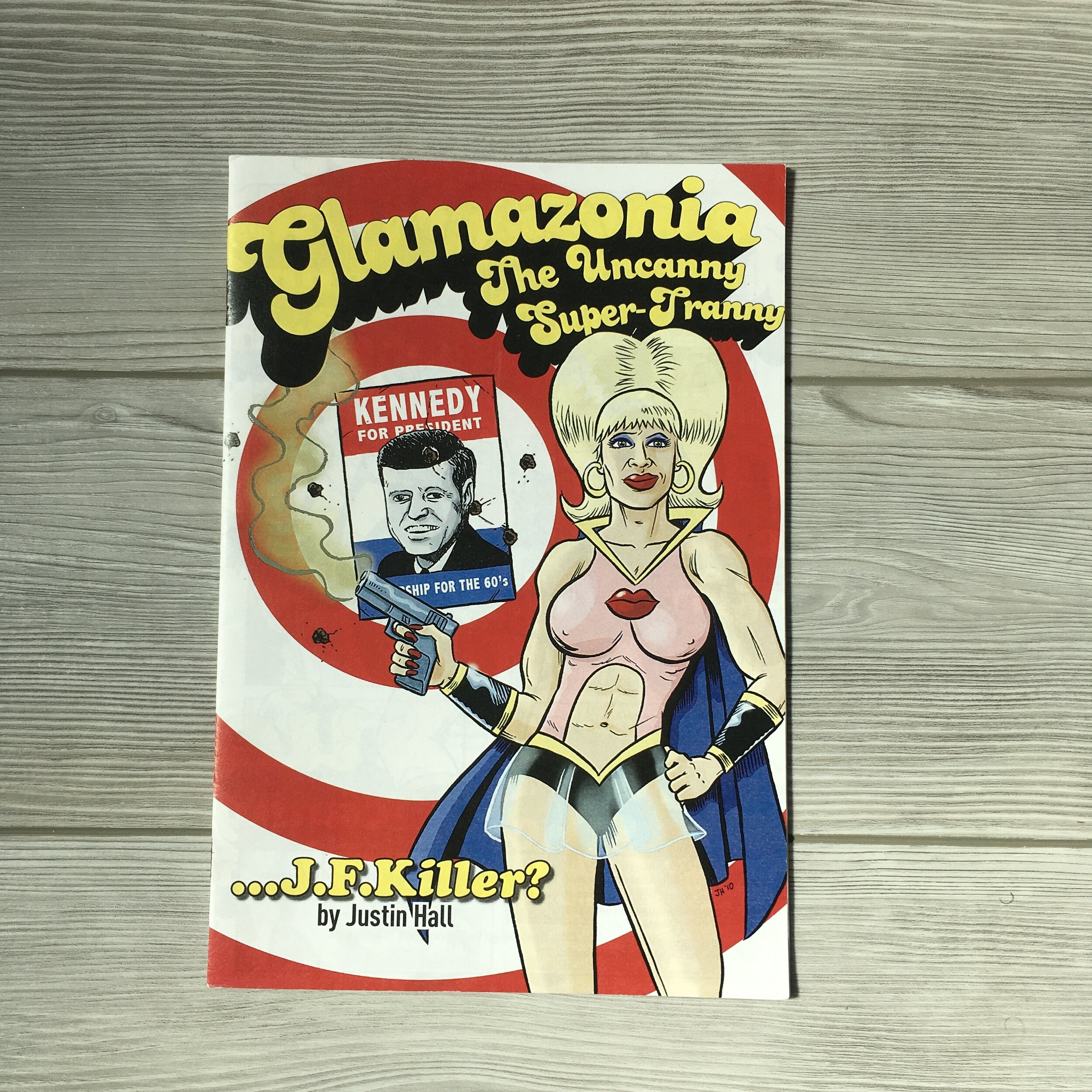
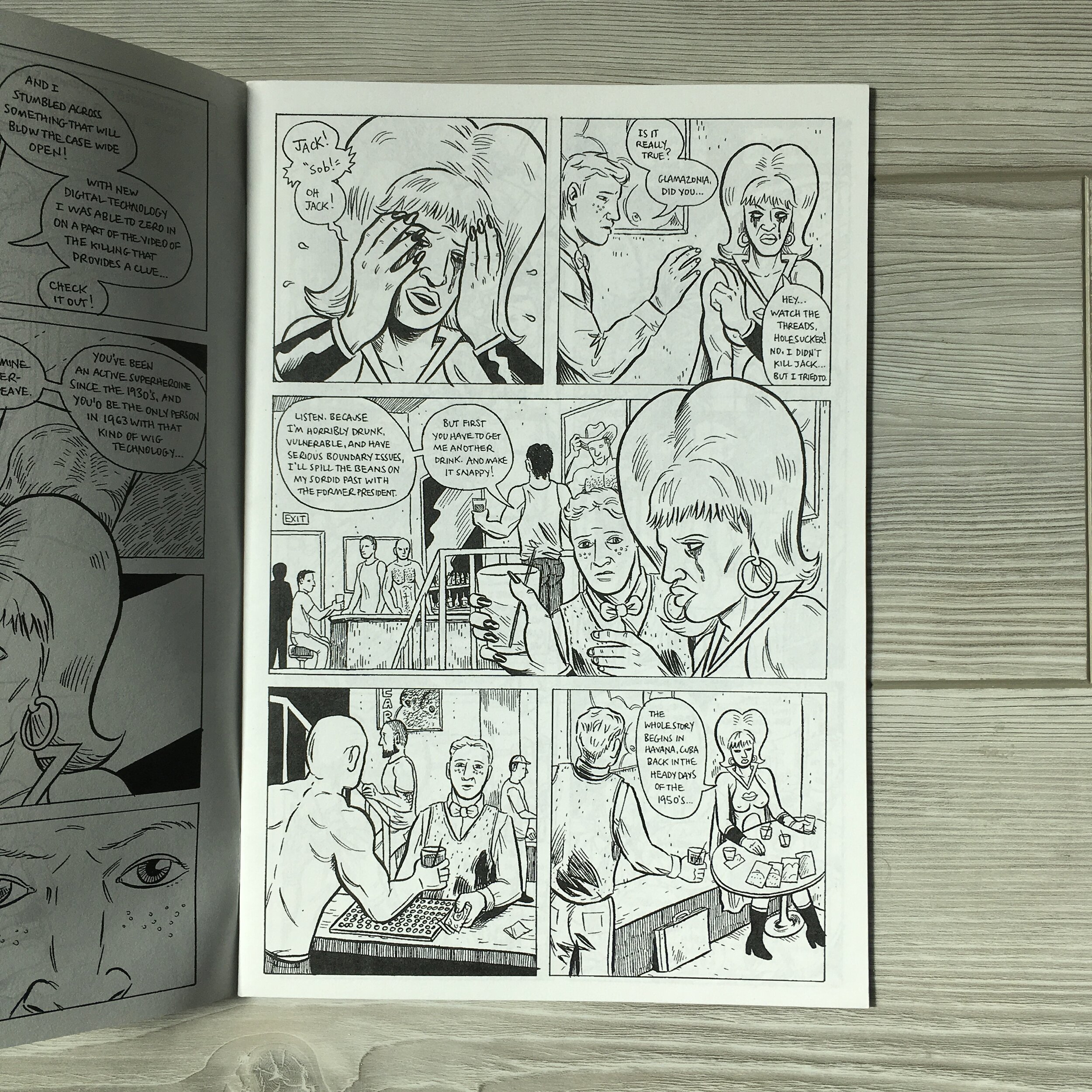
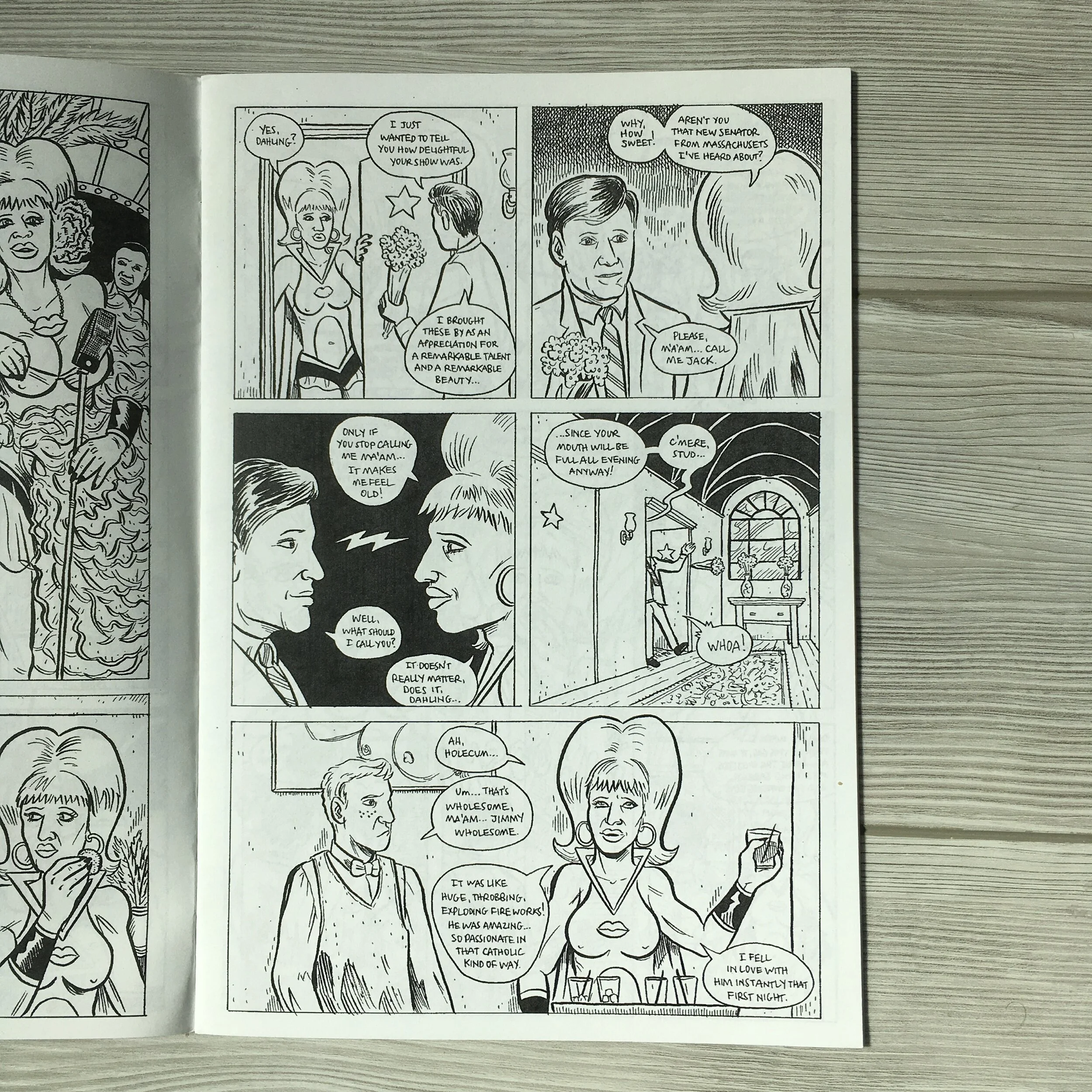
Theater of Terror! Revenge of The Queers: 2019
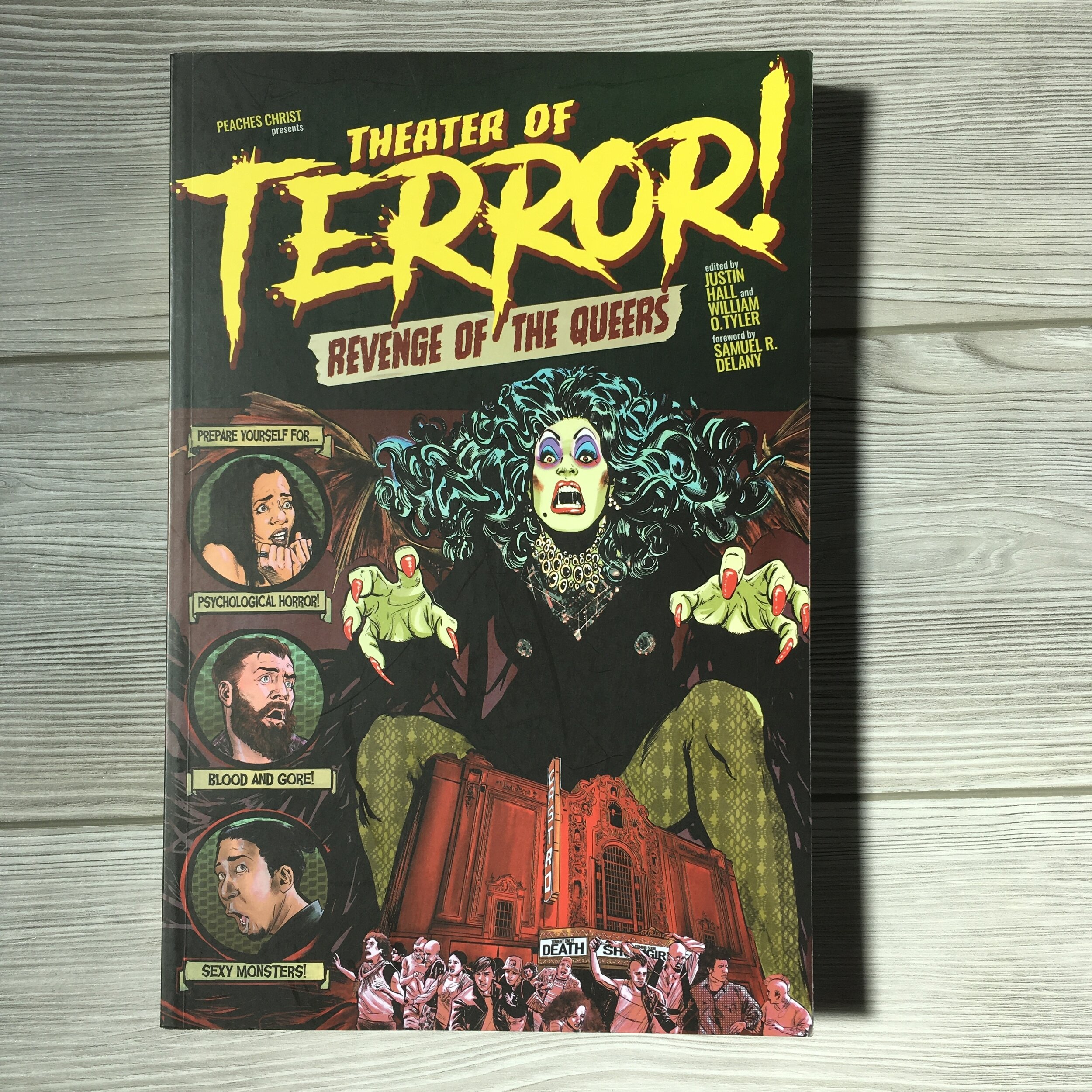
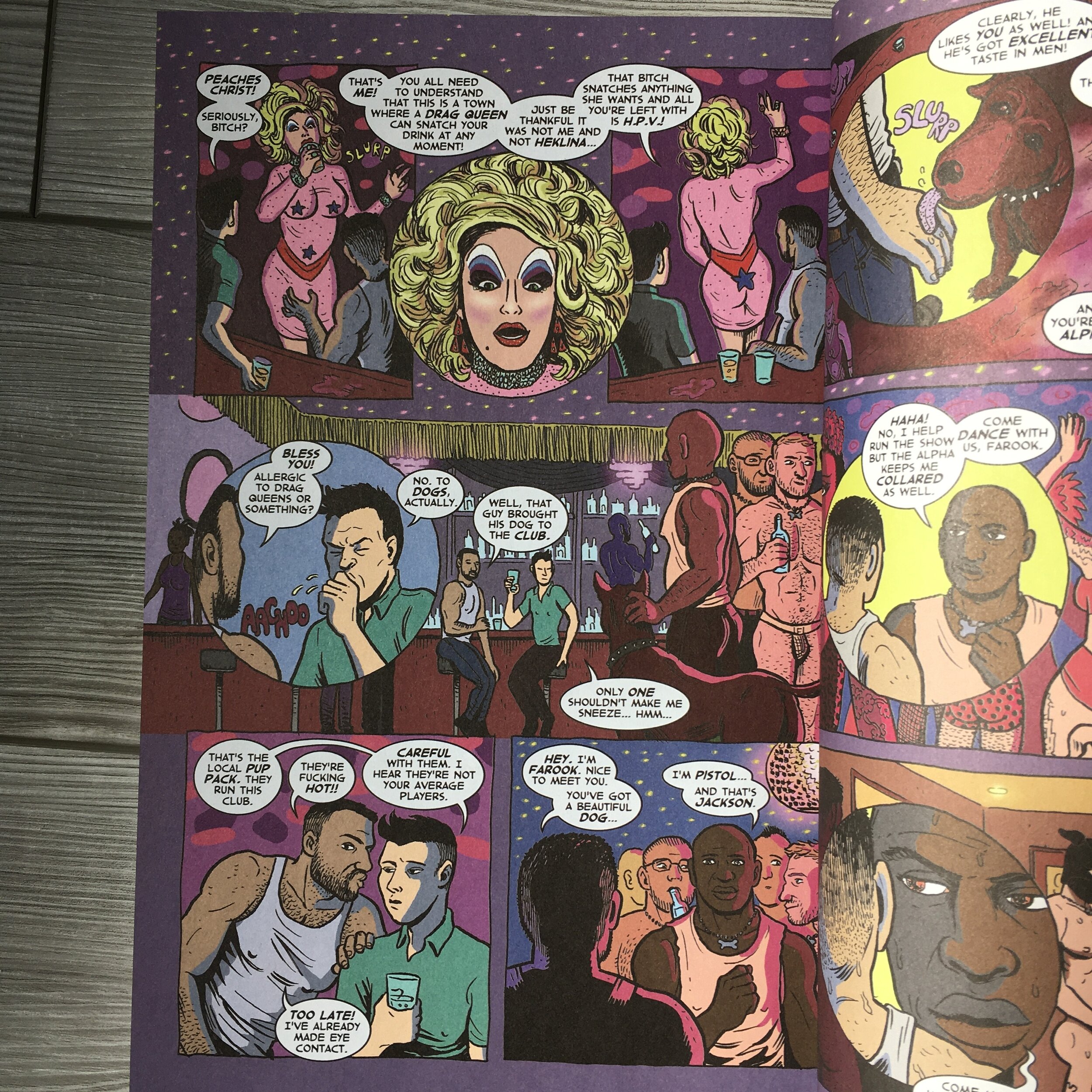
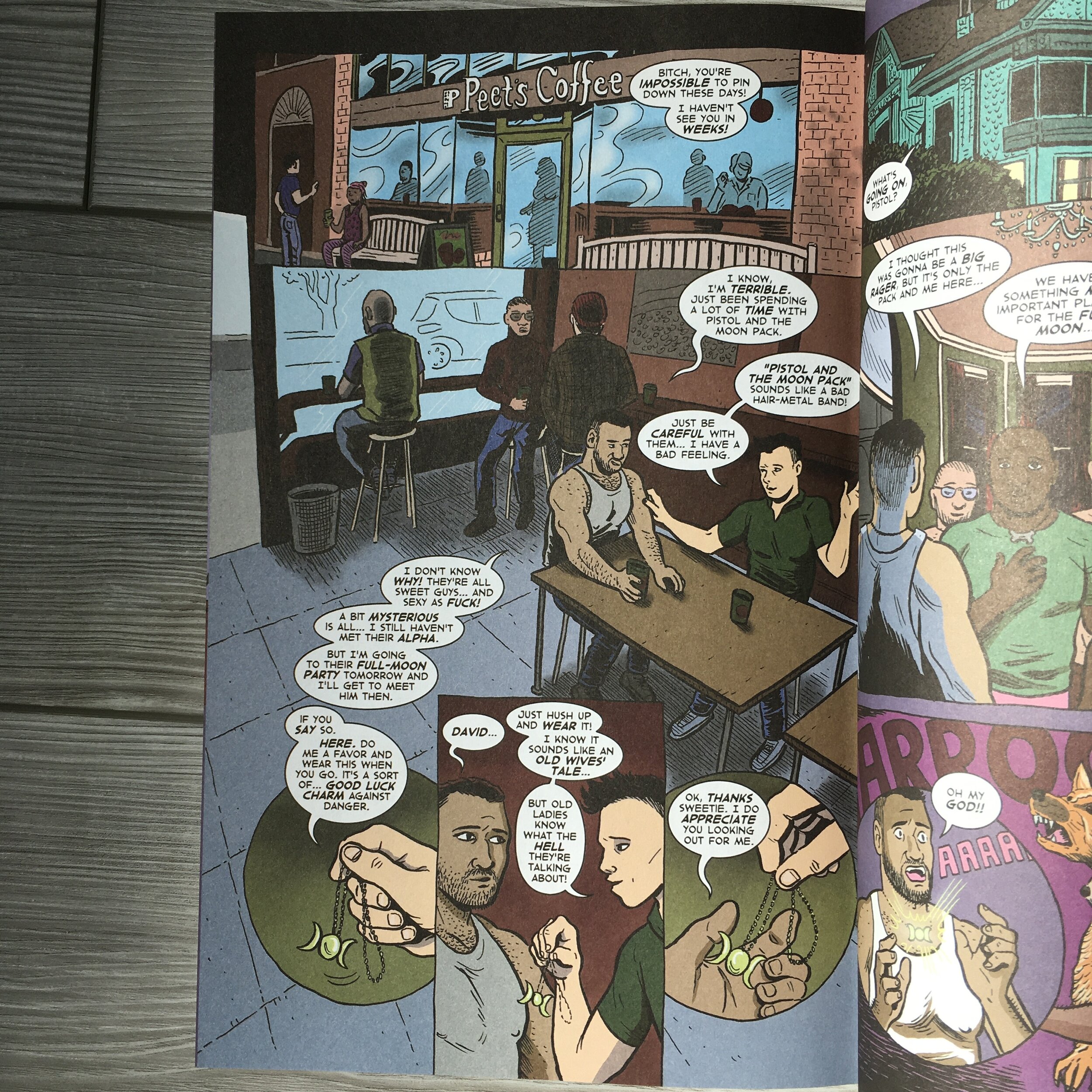
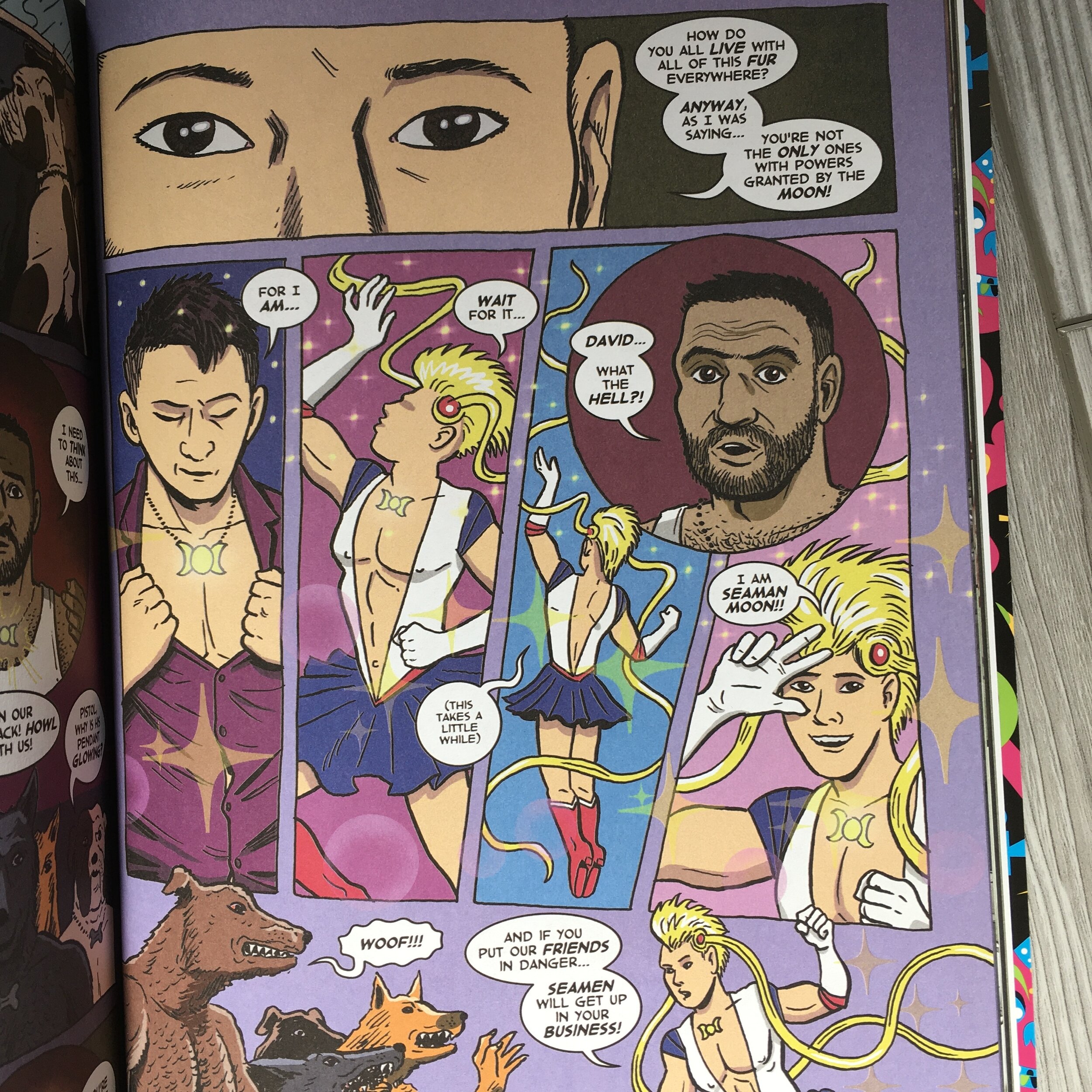
Justin Hall Interview 2020
How are you doing?
Doing OK, all things considered. Feeling immensely fortunate that I don’t have to worry about housing or job insecurity so far during this pandemic. Of course, I’m climbing the walls, but I’m still able to make art and enjoy my life with my husband.
Are you from the Bay Area or did you move here?
I moved to San Francisco back in 1995 with 9 dollars in my pocket
If not, where are you originally from?
I grew up in Providence, RI, but had been living in New Mexico, New York, and traveling around Africa and Europe before moving here.
When did you start making comics?
I’ve been cartooning my entire life in some way, but I self-published my first comic in 2001 and haven’t looked back since.
How has the progression of your cartooning career impacted your life?
It’s been an absolute foundational aspect of my identity, my passions, my goals, and my community. It’s one of the main reasons I moved to the Bay Area.
How have you grown since your earlier comics?
Both the world and I have changed tremendously. I’ve certainly become a better cartoonist, illustrator, and writer (though I will always have a long way to go!), and I think I’ve become savvier about what sorts of stories I want to tell and how they can fit into the world at large.
What are some of your most memorable moments of your career so far?
I won the Xeric Award in 2001 for my first comic, and that was what pushed me to finally self-publish, table at a convention, and find my artistic community. I was 30 at the time and, despite desperately wanting to make comics, hadn’t actually made the leap; pre-internet, it was very difficult to find out how to make comics and enter into that world.
In 2003 I began the Queer Cartoonists Panel at APE, which I ran for 12 years and which allowed me to meet a wide gamut of LGBTQ cartoonists. It also forced me to become adept at public speaking and moderating, which has served me well.
In 2006 I began making the gay erotic comics series Hard to Swallow with my friend Dave Davenport. This threw me into another artistic community that had minimal cross-over with the indie comics scene. One of the things I love about what’s happening now is the integration of LGBTQ comics and even erotic comics into the general scene; back then, we were still very much marginalized creators.
In 2010 I began teaching at California College of the Arts, which was life changing. I’ve never been able to make a living solely at my art, and for the most part never been interested in making the sorts of compromises necessary to make that happen. But teaching comics was the perfect complement to making them and helping create community around them. I discovered a real passion for teaching; plus, I could make a living wage from it!
My book No Straight Lines: Four Decades of Queer Comics was published by Fantagraphics in 2012 and is probably what I’m best known for in the comics world. It came out of an NSL show I curated at the SF Cartoon Art Museum in 2006 (the world’s first museum show of LGBTQ comics), and I’m now producing an NSL feature-length documentary film.
In 2016 and 2017, I began teaching abroad in a more sustained way, primarily in Denmark at a comics arts school and also in the Czech Republic through a Fulbright. I also co-curated a large show of LGBTQ comics at the Schwules Museum in Berlin. These moments married my two greatest life passions: comics and travel. I intend to do a lot more of this! I also joined with Jen Camper to organize the Queers & Comics Conference, which I found incredibly inspiring and which joined my academic and creative interests with community building.
I have a lot more things I want to accomplish (I still have yet to finish my graphic novel!) and that can lead me to self-doubt and frustration, but I also have to remind myself of the good things I’ve done with the last 20 years.
What is different about the Bay Area comics scene compared to other places you have been?
The history, diversity, and welcoming nature of it are nothing short of remarkable. The first time I tabled was at the Alternative Press Expo in SF and it changed my life; the friends I made during that first convention (MariNaomi, Fred Noland, Jason McNamara, etc.) have remained close ever since. I feel constantly inspired by my students and other younger creators who continue to break boundaries in the Bay Area. I also remain profoundly grateful for the “old guard” here, folks like Trina Robbins, Lee Marrs, Burton Clarke, etc.
Any comics recommendations?
Stuck Rubber Baby by the late, great Howard Cruse has just been re-published by First Second Books, and I’m so damn happy that one of the great American graphic novels has finally been given its due. When it was first published in 1995, the world wasn’t ready for a monumental graphic novel set in 1960s Civil Rights era Alabama dealing with sexuality, race, and gender.
Any cartoon/tv shows or movie recommendations?
The Watchmen series on HBO was wonderful. I loved how it was respectful of the original graphic novel, but also took the story in entirely new directions.
What influences your work?
Virtually everything I do relates to storytelling. I’m not particularly skilled at creating beautiful visuals, so for me it’s all about telling stories. I’m interested in history, memoir, travel narratives, eroticism, and speculative fiction.
What do you want to do in comics in the next 5 years?
Continue teaching and editing and helping support new voices in the community, while at the same time paying homage to the pioneers who have come before.
What are you working on now?
I want to finish my damn graphic novel! And my film! Been working on those two projects for WAY too long now… I’m also working on a series of public art comics posters about pre-Stonewall queer SF history right now that will be installed along Market Street in November.
I’m also pitching more projects in which I’m the writer and someone else is illustrating. This allows me to imagine more intricate and visually complex sorts of stories, since I have a lot of limitations as an illustrator.
What does your work represent to you?
Simply put, it gives me purpose. I was talking with a friend recently who was confused about what she was going to do next with her life, and she told me that it was easy for me because I have always had this single-minded obsession with comics. And she was right; as challenging and infuriating and difficult as comics can be at times, I love them and I’m so grateful that I never have to wonder about my life’s purpose.
Thank you so much to Justin for doing this interview. The BAYlies is an archive project and it’s important for me as someone who is here right now to document and record what is happening, what has happened and will happen.
Please check out their work
Peace and Love
-Lawrence

